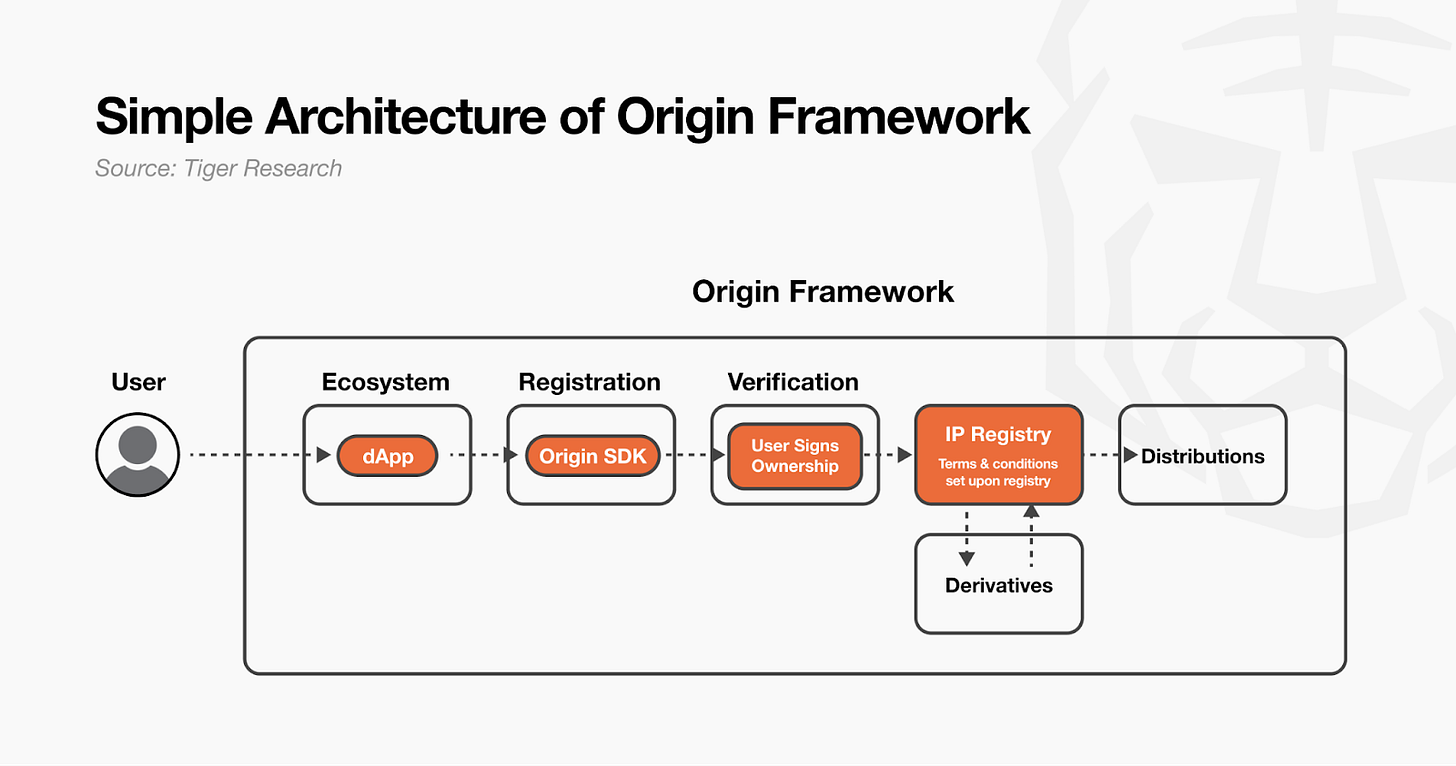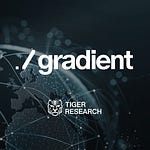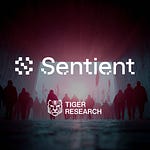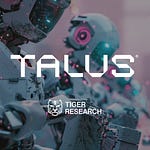This report was written by Tiger Research, analyzing Camp Network's innovation in AI-native IP infrastructure and its position in the evolving data sovereignty economy.
TL;DR
Data powers AI development as its core driving force, but experts expect this data to be exhausted by 2026. This creates a serious bottleneck crisis for AI technological advancement.
Camp Network solves this problem by enabling users to secure ownership of their data while AI pays fair costs for permitted data usage. Camp Network presents the Proof of Provenance protocol to facilitate this exchange.
Through this approach, Camp Network achieves both AI technological advancement and IP protection. Camp Network creates new economic ecosystems where everyone gains mutual benefits.
1. Data Is All We Need
AI technology has advanced at remarkable speed. Data has always been at its center. AI models develop by learning from vast amounts of human-created text, images, and videos. In this sense, artificial intelligence is essentially intelligence built from data.
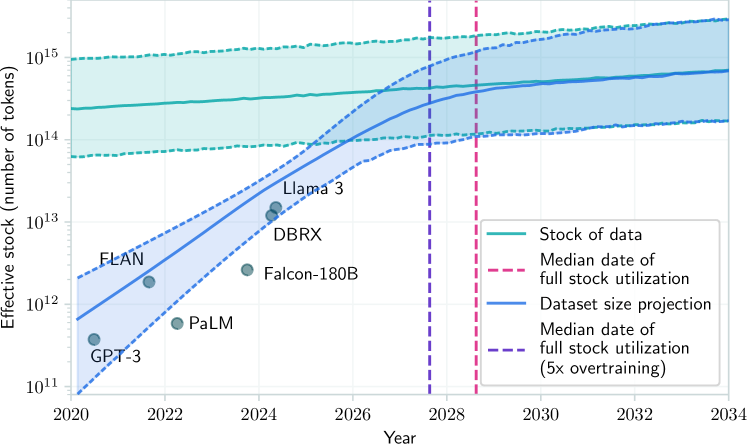
But data-driven development now reaches its limits. High-quality data is running out. Major foundation models like GPT have consumed most accessible internet data. They used this data for training. Easily collected data is exhausted. The future outlook is worse. Recent research shows a concerning trend. By 2026, human-generated data will be nearly depleted. This includes future content creation.
Some big tech companies now scrape user data without permission. They try to solve this shortage. Reddit sued Anthropic for unauthorized scraping. Anthropic used Reddit data to train Claude AI. This creates ethical problems. Most users don't know companies use their data. They receive no compensation.
The current situation creates a vicious cycle. The AI industry hits walls without new data. Users grow distrustful of unauthorized data use. Both sides remain unsatisfied. Data-hungry companies need more content. Data-owning users want protection. This sacrifices both AI advancement and data protection.
2. Camp Network: Layer-1 Blockchain for AI x IP Intersection
This exact moment brings Camp Network into the spotlight. They introduce cutting-edge infrastructure for the AI age. This tackles data scarcity and unauthorized usage challenges. Camp Network originally delivered solutions for users to carry their social data from YouTube, Instagram, and TikTok. Users carry these like portable 'digital backpacks.' They utilize them across diverse on-chain environments. This approach empowers users for them to control their data directly. It ensures compensation for them to receive. This establishes groundwork for enhanced data sovereignty.
Camp Network doesn't stop here. They leverage accumulated experience and technology. This helps them expand beyond social data. They target intellectual property territories. They aim to protect all user data comprehensively. Camp Network announces a revolutionary vision in 2025. They call it 'Autonomous IP Layer.' This signals major transformation. This vision attracts $30 million in Series A funding. 1kx leads this round. Blockchain Capital leads this round. They secure this foundation for them to achieve new growth milestones.
Camp Network presents Autonomous IP Layer as base infrastructure. It serves at the intersection of AI and IP. Its core centers on the 'Proof of Provenance' protocol. Users register their data on-chain through this protocol. AI utilizes this data layer. Royalties get automatically settled according to preset conditions.
Camp Network provides three components for them to implement this vision. BaseCAMP and SideCAMP constitute the blockchain infrastructure. Origin framework handles on-chain IP registration and management. mAItrix framework supports AI agent development. These components work together for them to build one organic ecosystem from IP registration through utilization and monetization.
2.1. BaseCAMP & SideCAMP: Scalable IP-Focused Infrastructure
Camp Network provides blockchain infrastructure composed of BaseCAMP and SideCAMP.
BaseCAMP performs as a 'Global State Manager.' It centrally manages all network activities. It functions as a ledger. The ledger records who registered which IP. It records where IP was used. It records how settlements occurred. Camp Network builds trustworthy IP ecosystems through this approach. BaseCAMP goes further. It provides IP-optimized features. It prioritizes IP-related transactions. This increases processing speed. It exempts gas fees. This reduces user burden.
SideCAMPs serves as dedicated execution spaces for individual applications. Each project gets independent environments. They don't compete with other dApps. Cross-messaging functionality enables smooth interaction. Different SideCAMPs can interact. This avoids isolation. It provides scalability. SideCAMP offers flexibility too. It optimizes specific workloads. These include AI inference. They include gaming. They include IP licensing.
However, some raise concerns about Camp Network's infrastructure structure. IP inherently requires global consensus. It's an asset. Systems handling IP need global consensus. They need verified security like Ethereum. This reflects this perspective.
Camp Network initially started Layer 2 development. This inherited Ethereum's security. But implementing IP-specific features revealed limits. Existing blockchain infrastructure had limitations. This led to independent Layer 1 development. For example, one music IP can generate tons of derivative content. This includes remixes. It includes covers. It includes sampling. This requires multiple smart contract calls. These calls handle dozens of different ownerships. They handle revenue distributions. This process involves high gas fees. It degrades processing speed. General trading environments may tolerate delays. But future AI agents operate 24/7. They use real-time data. They need instant settlements. They would face critical bottlenecks.
Camp Network determined IP complexity requires solutions. Real-time AI-IP interaction environments need optimized Layer 1 infrastructure. These technical requirements created the current structure. This became the background for the current BaseCAMP and SideCAMP architecture.
2.2. Origin: Unified Framework for IP Registration and Management
Origin is the core IP framework on Camp Network. It encompasses IP registration. It handles management. It covers utilization. It manages revenue distribution.
Users upload diverse content IP through multiple channels. They use dApps developed with Origin SDK. They use marketplaces provided by Camp Network. Content includes text. It includes images. It includes music. This content gets recorded on-chain as ERC 721-based NFTs. License conditions get configured during registration. Royalty distribution rules get configured too. Someone creates derivative content later. This bases on original content. Revenue automatically flows to original content creators. This completes the structure.
Origin's biggest feature structures IP relationships in 'graph' format. Derivative content from one piece becomes new smart contracts. But they connect to originals through parent-child relationships. Royalties from derivative content trigger automatic distribution to parent IP. Users can view entire content lineage at a glance.
Origin framework attracts developers as well as creators. Origin SDK enables developers to build IP applications easily. They don't need complex blockchain knowledge. Core functions are built into the SDK. These include IP registration (Onboard). They include derivative content creation (Remix). They include metadata search (Query). They include revenue distribution (Monetize). They include permission management (Permissioning). Developers can build complete IP ecosystems with just a few lines of code.
Origin supports on-chain dispute resolution mechanisms. IP involves sensitive areas like copyright infringement issues. Anyone can raise disputes about suspicious IP. Camp DAO makes final judgments. Parent IP enters dispute status sometimes. All child IP derived from it automatically inherits dispute status too. This manages complex IP issues systematically and strictly.
Origin isn't simply a tool for them to mint IP as NFTs. It functions as an on-chain copyright system. It transparently tracks everything from creation origins to utilization processes and revenue distribution. It executes these automatically.
2.3. mAItrix Framework: IP-Native AI Agent Development Framework
mAItrix provides an integrated SDK for AI agent development, training, and deployment. It operates alongside the Origin framework for them to connect entire processes into one pipeline. This spans from AI model training using on-chain IP to derivative content generation through AI agents.
mAItrix's core focuses on AI training and utilization. It uses only permitted data. Traditional AI collected all internet data indiscriminately. It used this for learning. mAItrix works differently. It uses only data with clear ownership. This data gets registered in the Origin. This enables creators to receive fair compensation. They get paid for their data usage. AI developers can develop AI safely. They avoid legal disputes.
This approach transcends simple technical improvements. It presents new paradigms for entire industries. Illegal downloads were rampant in past music markets. Streaming services like Spotify established fair payment systems. Markets grew even more. Similar changes are expected in AI and IP markets.
mAItrix also simplifies complex processes. It helps deploy AI agents. It helps operate AI agents. It builds environments where multiple AI agents interact. AI agents get developed through mAItrix. They can function as IP assets themselves. They get tokenized through the Origin. They get registered on-chain. Other users utilize them. Other agents utilize them. Developers receive automatic royalties. This happens each time. AI agents generate new content. This gets registered as new IP. It becomes additional revenue sources.
mAItrix aims for developer-friendly platforms. It provides maximum freedom to developers. They can utilize any AI models freely. TEE protects sensitive data safely. TEE means Trusted Execution Environment. This prevents external leaks.
Camp Network plans to develop mAItrix through three stages. v1 is currently preparing. It will provide integrated environments. Developers can train AI directly with IP registered in the Origin. It offers more user-friendly interfaces. These beat existing AI tools. v2 targets 'Vercel for agents.' This enables easy AI deployment. It avoids complex server setup. Final v3 will provide intelligent routing services. Users say "create music" or "generate images." The system automatically finds suitable agents. It connects music-specialized AI or image generation AI.
3. How Does It Differ from Other IP-Based Protocols?
Camp Network takes different approaches from existing IP-related protocols. Comparing it with Story and Soneium makes these differences clear.
Story and Soneium focus on frameworks for them to utilize and manage traditional Web2 IP on blockchain. Their main goal improves management efficiency of existing intellectual property. This includes copyrights held by large entertainment companies and media corporations. It enhances scalability too. This represents meaningful approaches for them to help digital transformation of existing IP industries.
Camp defines user-owned IP as much broader concepts. It means all digital data and content that users create. This includes YouTube videos, Instagram photos, and TikTok content. All forms of personal data apply. Camp goes one step further. It focuses on integrating this user data with AI. Camp designs with AI and IP integration as prerequisites. AI agents utilize permitted personal data for them to learn and generate new content. This also gets registered as new IP. This builds complete pipelines. Camp's core philosophy creates win-win structures. It protects user data while advancing AI technology together.
Camp ultimately aims beyond simple IP management. It builds new economic ecosystems where all participants share value fairly. This includes individual creators. It includes AI developers. Camp doesn't offer digital transformation of existing IP industries. It presents completely new paradigms of creation and collaboration. These suit the AI era.
4. The Future of AI Technology and IP Protection
Data depletion and legal disputes represent current crises in the AI era. Unauthorized scraping causes these disputes. They aren't future problems. Forecasts show concerning trends. Human-generated data will be nearly exhausted by 2026. Reddit and Anthropic lawsuit issues demonstrate structural limitations. Existing AI development methods have these limitations.
Camp Network presents fundamental solutions to these exact problems. It solves both supply and consumption problems. It uses new AI and IP integrated ecosystems. These ecosystems center on user-owned data. The Proof of Provenance protocol clarifies IP origins. AI learns from data. It automatically distributes royalties. This transforms one-way data exploitation. It creates mutually beneficial systems.
This approach already produces substantial results. Camp ecosystem currently has 300,000 unique IPs registered. It has 4 million unique wallets created. This shows massive user adoption. Over 60 teams develop various applications. They use Camp Network's infrastructure. Cases combining AI and IP emerge across multiple fields. These include music, gaming, and sports.
Camp Network's role becomes more important in the future. AI agents will become commonplace. Agents will generate IP directly. They will collaborate with other agents. They will process licenses automatically. These environments require infrastructure. The infrastructure must track complex relationship networks rapidly. It must manage them efficiently. Existing IP workflows are slow and expensive. They cannot meet these requirements. Camp already prepared these foundations.
Camp Network ultimately aims to become the core solution. It targets AI era data problems. It wants to become the standard for new IP ecosystems. It presents new paradigms. These solve AI industry's fundamental data scarcity problems. They address individual data sovereignty rights. This creates foundations. Creators pursue mutual benefits. Developers pursue mutual benefits. AI systems pursue mutual benefits. They develop together. This ecosystem generates over 50 million transactions. AI and IP collaboration becomes actual working economic systems. They're no longer just concepts.
🐯 More from Tiger Research
Read more reports related to this research.Maple Finance: Onchain Asset Management for the Institutional Capital Era
Hyperlane: The Permissionless Cross-Chain Protocol Connecting 150+ Blockchains
Disclaimer
This report was partially funded by Camp Network. It was independently produced by our researchers using credible sources. The findings, recommendations, and opinions are based on information available at publication time and may change without notice. We disclaim liability for any losses from using this report or its contents and do not warrant its accuracy or completeness. The information may differ from others' views. This report is for informational purposes only and is not legal, business, investment, or tax advice. References to securities or digital assets are for illustration only, not investment advice or offers. This material is not intended for investors.
Terms of Usage
Tiger Research allows the fair use of its reports. ‘Fair use’ is a principle that broadly permits the use of specific content for public interest purposes, as long as it doesn't harm the commercial value of the material. If the use aligns with the purpose of fair use, the reports can be utilized without prior permission. However, when citing Tiger Research's reports, it is mandatory to 1) clearly state 'Tiger Research' as the source, 2) include the Tiger Research logo following brand guideline. If the material is to be restructured and published, separate negotiations are required. Unauthorized use of the reports may result in legal action.





